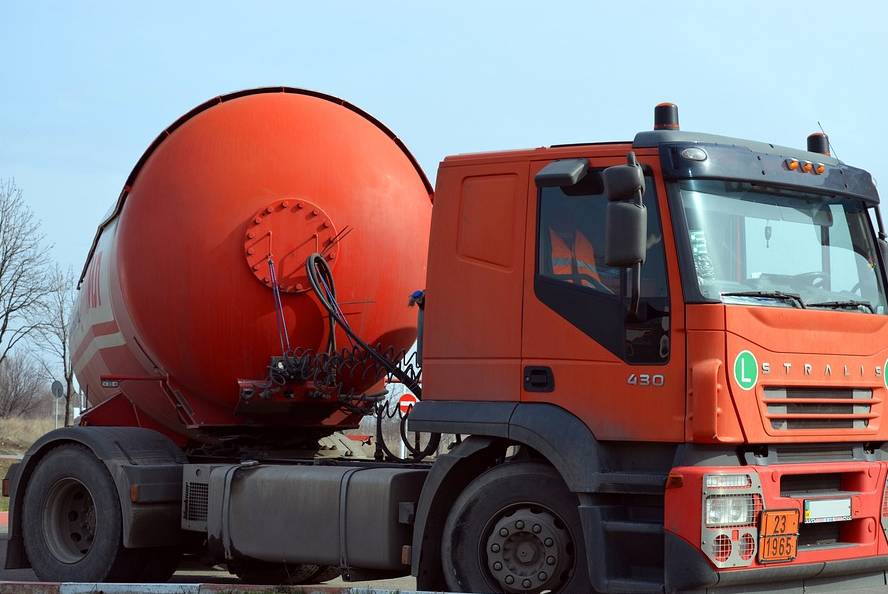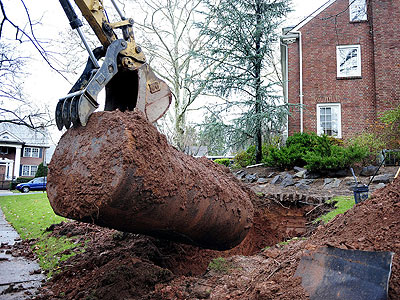
Buying a house is difficult enough, but it's an instant deal-breaker when you discover a buried oil tank on the property-- especially if you weren't aware of it before making the purchase.
Although not familiar, some homes have underground oil tanks. Don't be concerned if you find yourself in this situation--we're here to help. Decommissioning an old tank can be expensive, but we'll walk you through how to prepare for any potential hurdles.

A buried oil tank is a large metal container used to hold or currently holds fuel oil. The primary way you used this oil was to heat the home.
Two problems were solved as a result:
The tanks were hidden
The valuable oil inside was much harder to steal
In the past few decades, there has been a significant shift in the preferred fuel to heat homes, with oil no longer being at the forefront. The main reasons? Oil became more expensive, and its prices began to fluctuate wildly.
Although it may seem like natural gas has been around forever, it is quite a recent invention. For example, in Seattle, WA, homes were not equipped with pipes to deliver natural gas until the 1960s. Oil was a heat source in many houses before the 1960s, even if those identical houses now use natural gas or electricity.
In general, these homes fall into two categories:
Oil tank abandoned in an old house
Decommissioned oil tank in an old house
In general, most oil tanks have been decommissioned properly. This is what it means.
If you have an underground tank on your property, it can be classified as either inactive or active. You have a few alternatives for decommissioning the tank once it's complete. It is when the tank is "permanently closed" using one of the following procedures:
Capping the tank
Using materials like foam or slurry to fill the tank
Removing the tank from the ground
Polyurethane foam is a popular option for filling a tank because it has numerous benefits, like being lightweight and reducing health hazards while maintaining its structural integrity. A corroded tank, without foam or a filling, could leave a sinkhole in your yard if it collapses.
A leaking underground oil tank that hasn't been decommissioned increases your risk as a homeowner. It includes the following:
Financial risk
Health risk
Environmental risk
Potential legal liability
If an oil tank develops a leak, the expense of cleaning polluted soil and water may quickly reach thousands of dollars. Homeowners' insurance will not pay for these charges in case of a leak. You could be liable for damages and legal fees if the leak affects your neighbors, local businesses, or government buildings.
It would help if you didn't ignore oil tank leaks because they can cause environmental and health risks. Suppose a leak expands from the ground into the groundwater. In that case, it can pollute it and make it vacant for irrigation, which could also affect nearby residents and wildlife if the contaminated water reaches the surface.
If you're worried about an underground oil tank that might be leaking or liable to do so in the near or distant future, get your property inspected by a professional specializing in oil tank location and decommissioning.
If the oil tank hasn't been decommissioned, you might want to add full decommission as a contingency.
Before you purchase a used tank, ensure that it has been adequately decommissioned by asking the seller for documentation. You may also incorporate it into the title as a permanent record of the oil tank decommissioning. If you want to sell the home in the future, having a copy of the decommissioning declaration on hand might be helpful.
When you're looking for a gas meter or oil tank fill valve outside the home, check for the presence of a breather tube (sometimes Known as a vent pipe),
The breather tube and fill valve are usually removed or chopped off when an old oil tank is decommissioned. There will be no visible indications of an oil tank in this situation.
If you discover a gas meter and an oil tank, it might indicate that the tank has been left unattended and must be decommissioned. Always check with a qualified expert if you're unsure.
You can find small copper lines near the furnace (pictured above). If you see copper tubes with pinched ends, likely, the house was once heated using oil. It is because underground oil tanks were used in the past.

Nov 27,2022

Nov 20,2022

Nov 13,2022
